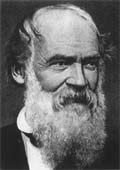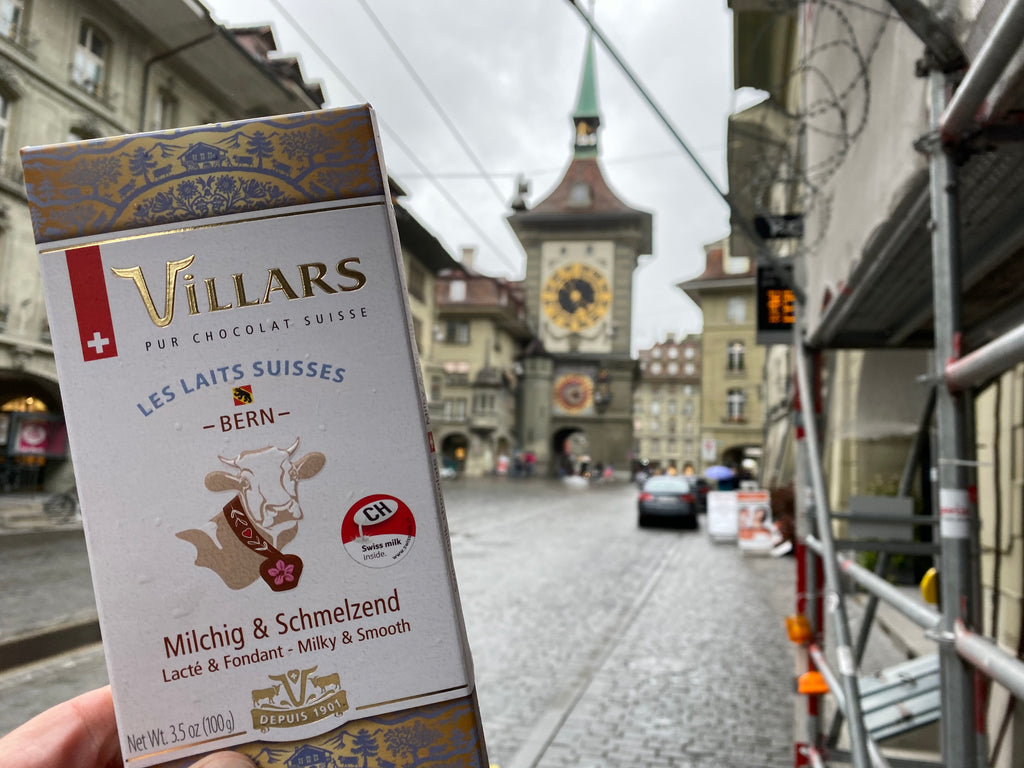A Fascinating history - How Berne became the Capital of Chocolate
The history of the Swiss Chocolate industry started relatively late compared to other countries. The first cocoa beans coming from Mexico arrived in Europe as early as the 15th century. With it came a drink called Xocólatl, which known there for a long time and was now becoming increasingly popular among the nobility in Spain, France and Italy. As Switzerland has no direct connection to the sea, it was not until the middle of the 18th century that the first chocolate manufacturers tried their luck here. Most of them had acquired their skills in Italy.
Although companies such as Suchard or Cailler concentrated on exporting their products early on, Swiss Chocolate was initially not very high in demand, with less than 1,000 tons being exported until around 1895 - far behind the Netherlands, England and France. But only 10 years later, Swiss Chocolate makers overtook them all and by 1912 they sold seven times more chocolate worldwide than second-placed France! That is when things really got going and by 1918, exports reached almost 250,000 tons, a level not reached again until the 1980s.
The history of Swiss Chocolate is rich - so here just a few anecdotes from the years 1879-1920. Why do we mainly focus on Berne and what this city has got to do with chocolate? Let`s find out.
PHILIPPE SUCHARD

(born 1797 in Boudry (Canton Neuchâtel) - died 1884 in Neuchâtel), founder of the company Suchard
Philippe Suchard started his apprenticeship in 1814 at Kramgasse 23 in Berne. Togheter with his brother Friedrich, Suchard stayed there for 8 years before founding his own company in Neuchâtel in 1825. Carring its founders`s familiy name, the company became one of the largest chocolate factories in the world while its founder was still alive. To this day, Suchard products are famous and well known, such as Suchard Express and Sugus, and of course Milka. Does Milka also have connections to Berne?

In 1819, François Louis Cailler opened the first industrial chocolate factory and launched the first chocolate bar. In Lausanne, Charles Amedée Kohler invented the first Swiss chocolate with full nuts in 1830 and in 1875 Daniel Peter (a neighbor of Henry Nestlé) invented the milk chocolate made from condensed milk in Vevey. In 1911 Kohler and Peter merged with Cailler, and their new company became a Nestlé brand by 1929.
While in Vevey, Charles Amédée Kohler Junior had an apprentice in the mid-1870s. It was his nephew from Berne. As he had the same name as his father - Johann Rudolf - the young apprentice, just returned from the French Switzerland to his hometown in the German part, to change his name...
RODOLPHE LINDT

(born 1855 in Berne - died 1909 in Berne), inventor of the Lindt Chocolate
At the age of 24, and with new name, Rodolphe initiated nothing less than the chocolate revolution in Berne's Matte district, down at the river Aare. Before his revolution, chocolate was more bitter and had a sandy texture. Rodolphe Lindt achieved for his chocolate to become velvety soft, full of aromas and melting in the mouth – a characteristic every chocolate has today. How did he manage that? Well, evil gossip has it that Lindt was not very keen on working and simply forgot to turn off his machines one Friday evening - and when he returned on Monday a miracle happened.
Surely it wasn't that easy - after all, he was able to keep his secret for 20 years while the entire industry tried without success to imitate this ingenious chocolate. In 1899 he sold his know-how to the Sprünglis in Zurich, and that became Lindt & Sprüngli. What else is there to say about Rodolphe? Well, quite a lot actually - he and his family tree were not boring at all...

DR. ALBERT WANDER

(born 1867 in Berne – died 1950 in Lugano), creator of the Ovomaltine (Ovaltine)
Ovomaltine has a very special taste, due to the malt being one of the main ingredients. Usually, malt is used to make beer or whiskey, but Albert Wander was more interested in the healing effect of malt with its essential ingredients. His interest was inherited. Like Henry Nestlé the three most important generations of the Wander family were all pharmacists. Among other things, these three generations developed between them medicines that are still well known today. Amongst them are Mebucaine, Neo-Citran or Herbalpina. It is not surprising that The Ovo was initially marketed as and sold for medicinal purposes. In 1927, the Wander company moved its headquarters from Berne to Neuenegg, almost 20 km away. Nowadays, the pharmaceutical division of their company belongs to Novartis, while the foods of the Ovo linie, Caotina and Isostar form now part to the British group Associated British Foods.
Nowadays the Ovo is available in well over 100 countries around the world - so it is far more than just The Swiss National Drink...
But why is the Ovomaltine called Ovaltine in many countries?

THEODOR TOBLER

(born 1876 in Berne – died 1941 in Berne) and the origin of the Toblerone
Theodor Tobler dropped out of school at the age of 16, After 2 years training as an accountant both in Geneva and Venice, the now 18-year-old Theodor Tobler returned to the family business.
In 1900, aged 24, he took over the running of the Chocolat Tobler Factory his father. With breakneck speed he transformed the 50-employee-strong company into a global corporation. It was during that time Theodor Tobler and his cousin Emil Baumann developed the Toblerone in the factory kitchen at the Länggasse in Berne.
By 1920, Tobler chocolates were sold in 120 countries around the world. How was it possible for a company led by a school dropout to achieve such a success within 20 years, in a time before TV and social mediat? Only thanks to Toblerone? Definately no, because, although the icon was invented in 1908, it was not until around 1920 that the most famous triangle in the world played a major role for the company.It is thanks to Theodor Tobler`s charismatic personality, his patronage, political vision and genius marketing that the company found such success. You can find out more about Theodor, his life's work and many other things that go far beyond the true history of Toblerone and shape our everyday life to this day in the Swiss Chocolate World Berne. By the way: Today, Toblerone belongs to Mondelez and between 1996 and 2022, every Toblerone that you bought anywhere in the world has been produced exclusively in the outskirts of Berne. By 2023 Toblerones will be produced additionally in Bratislava, too
CHOCOLAT VILLARS
In 1901 Kaiser Wilhelm founded his own chocolate factory. Of course, said Wilhelm was not the German Emperor, but the Bernese Wilhelm Kaiser. Aged 28, he founded Chocolat Villars in Villars-sur-Glâne, Fribourg. The first few years were tough for the new company, but from 1910 and within only a few months, Villars set up more than 60 of its own points of sale and shops accros Switzerland - a novelty in those days. His plans succeeded and by 1904, now renowned Villars became purveyor to the court of the Spanish royal family.
CAMILLE BLOCH

(born 1891 in Berne - died 1970 in Berne), founder of the chocolate company Camille Bloch
Camille Bloch completed his commercial training at Chocolat Toblerbefore engaging in confectionery dealing from 1919 onwards. In 1929, he seized the opportunity and employed former staff and took over machines from the Lindt company, and began to produce his own chocolate at Berne-Belpstrasse. The company eventually relocated to the Jura Mountains in 1934. A few years later, the popular Ragusa and Torino were launched. Or also the Ours de Berne.

CHOCOLAT GYSI
Founded in 1931, Gysi was a traditional Bernese chocolate house that supplied their products to internationally famous department stores such as Harrods and Marks & Spencer. Unfortunately, the company ceased trading in early 2020. Today, the famous Gysi Swiss Army Knife, made entirely of chocolate is produced by Felchlin from Ibach - the same place where the company Victorinox makes the real knives.
Many of the most famous chocolates in the world have their origins in Berne, but there are also expamples of chocolate manufacturers like Villars that never produced in Berne at all. Of the chocolate manufacturers with roots in Berne like Suchard, Lindt and Camille Bloch have left long time ago, However, Wander stayed close by and Toblerone is still exclusively made in the outskirts of Berne. The companies Suchard and Tobler merged in 1970 to become Interfood which, in 1982, was taken over by Jacobs (Jacobs Suchard Tobler). In 1990, this company was again integrated into the Kraft Foods Group, renamed Mondelez 2012.
Today, only a tram stop called Wander, faded lettering on one of the a later buildings of the Lindt company in the Matte and the UniTobler, which was the Tobler(one) factory until 1985, reminding of those sweet times. And yet, sometimes you can still catch the smell of Toblerone coming from Brünnen and even in the city and in a 25 km around it, you can find wonderful chocolatiers.
CHOCOLAT AMMANN
Chocolat Ammann has also very special history. Founded by Theodor Ammann 1949 in Konolfingen, the birthplace of the famous author Friedrich Dürrenmatt, the production of the legendary chocolate kings began in 1959. Six years later the company moved to Heimberg near Thun. What do you think: is there a funny anecdote to tell about this company as well?
CASA NOBILE
Casa Nobile This multi-award-winning chocolate manufacturer from Bätterkinden, 25 km outside from the Swiss capital, dedicates its world-class collection to the city of Berne with its Bärner Momente.
SWISSONE
Swissone It`s Bernes' youngest chocolate brand and has been on the market since August 2020. Founded by Vernons Stuber, this brand contains significantly less sugar but keeps a real, original chocolate taste, it inspires connoisseurs and lovers alike.
The relationship between Berne and chocolate is enormously striking and has contributed to the huge success and world fame unlike any other cithy, establishing that "Swiss chocolate is the best". Once our Swiss Chocolate History World Museum in Berne - the Capital of Chocolate - is open, you will be able to know everything about our national symbol, Swiss Chocolate. Of course, in addition to Bernese chocolates, there are many other important brands in our country. You can find and get to know them in the Swiss Chocolate Brands section of our website. But if ever you are now in the mood for some real chocolate experiences, herer are the places to go or here you can go directly to shop.
Have fun in your chocolate paradies!
Your Swiss Chocolate World

...happify my day...


















